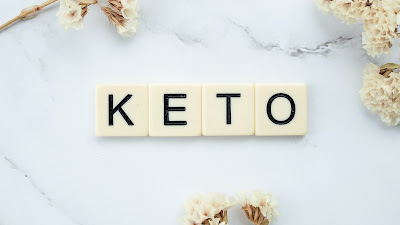What is Ketosis?
Ketosis is a metabolic state that occurs when the body starts using ketones as an alternative fuel source instead of glucose. It typically develops in response to a reduction in carbohydrate intake and an increase in fat consumption.
Ketosis and the Keto Diet
Ketosis is a popular low-carb weight loss program. In addition to helping you burn fat, ketosis can make you feel less hungry. It also helps you keep muscle.
For healthy people who don't have diabetes and aren't pregnant, ketosis usually kicks in after 3 or 4 days of eating fewer than 50 grams of carbohydrates per day. That's about three slices of bread, a cup of low-fat fruit yogurt, or two small bananas. You can start ketosis by fasting, too.
A diet high in fat and protein but very low in carbs is called a ketogenic or “keto” diet.
Ketosis Symptoms and Side Effects
During the first week of a keto diet, you might start to feel bad. Some people call this the "keto flu," but it isn’t an official medical condition. Some doctors think this is due to sugar and carbohydrate withdrawal. Or it could be because of changes to your gut bacteria or an immune system reaction. You might notice temporary side effects such as:
» Headache
» Fatigue
» Brain fog
» Irritability
» Constipation
» Trouble sleeping
» Nausea
» Stomachache
» Dizziness
» Sugar cravings
» Cramps
» Sore muscles
» Bad breath, also known as ketosis breath
Here's a detailed explanation of how ketosis develops:
1. Carbohydrate Restriction:
When you significantly reduce your carbohydrate intake, your body's primary source of energy, glucose, becomes scarce. Carbohydrates are broken down into glucose during digestion, and glucose is used by cells for energy.
2. Depletion of Glycogen Stores:
The body stores glucose in the form of glycogen in the liver and muscles. As you reduce carbohydrate intake, these glycogen stores are gradually depleted. Glycogen holds onto water, so as glycogen levels drop, the body sheds excess water weight.
3. Insulin Levels Drop:
Carbohydrate consumption triggers the release of insulin, a hormone that helps regulate blood sugar levels by facilitating the uptake of glucose into cells. With lower carbohydrate intake, insulin levels decrease.
4. Increased Fat Utilization:
In the absence of sufficient glucose for energy, the body begins to break down stored fat into fatty acids through a process called lipolysis. These fatty acids are then transported to the liver, where they're converted into ketones through a process called ketogenesis.
5. Ketone Production:
Ketones, including beta-hydroxybutyrate, acetoacetate, and acetone, are produced in the liver as an alternative fuel source. These ketones are released into the bloodstream and can be used by various tissues, including the brain, for energy.
6. Shift to Ketone Utilization:
As ketone levels rise in the bloodstream, various organs and tissues start to adapt to using ketones for fuel instead of glucose. The brain, in particular, begins to rely on ketones, which can efficiently cross the blood-brain barrier and provide energy.
7. Achieving Ketosis:
Ketosis is typically considered to occur when ketone levels in the blood reach a certain threshold, usually around 0.5-3.0 millimoles per liter. This can be measured using blood, urine, or breath tests.
The Bottom Line:
It's important to note that ketosis is a natural metabolic state that the body can enter to provide an alternative energy source when glucose availability is limited. This can happen during periods of fasting, prolonged exercise, or when following a low-carbohydrate or ketogenic diet. While ketosis can have benefits for weight loss and certain medical conditions, it's essential to approach dietary changes carefully and under the guidance of a healthcare professional, especially for individuals with specific health concerns or medical conditions.




0 Comments